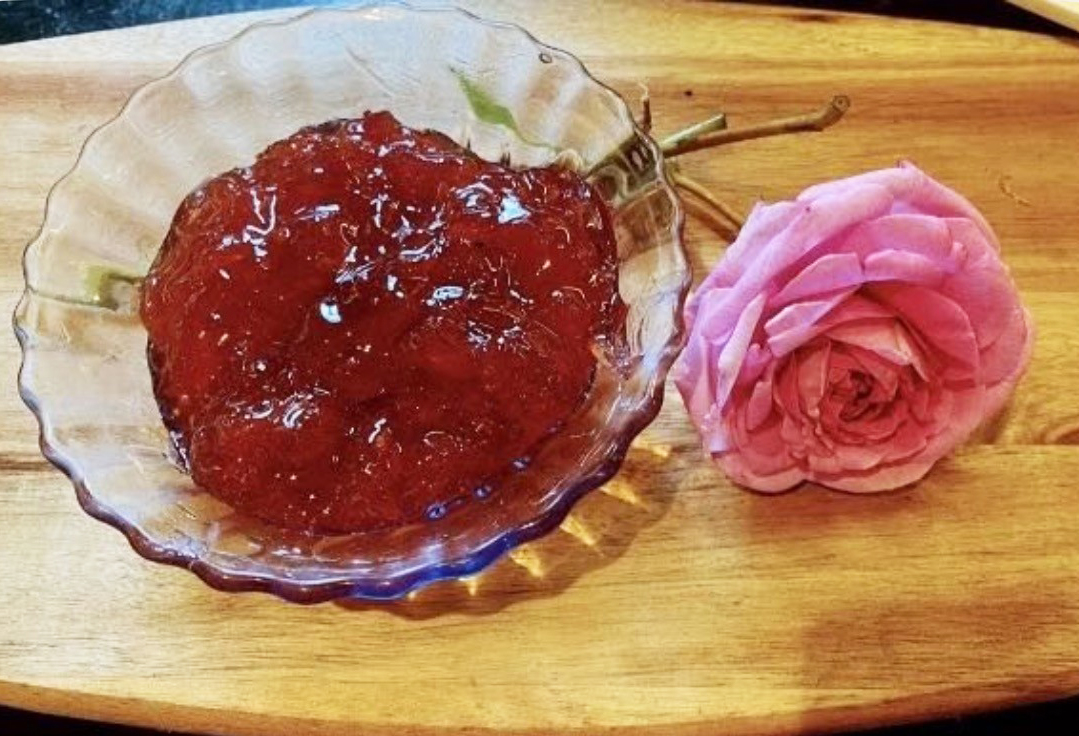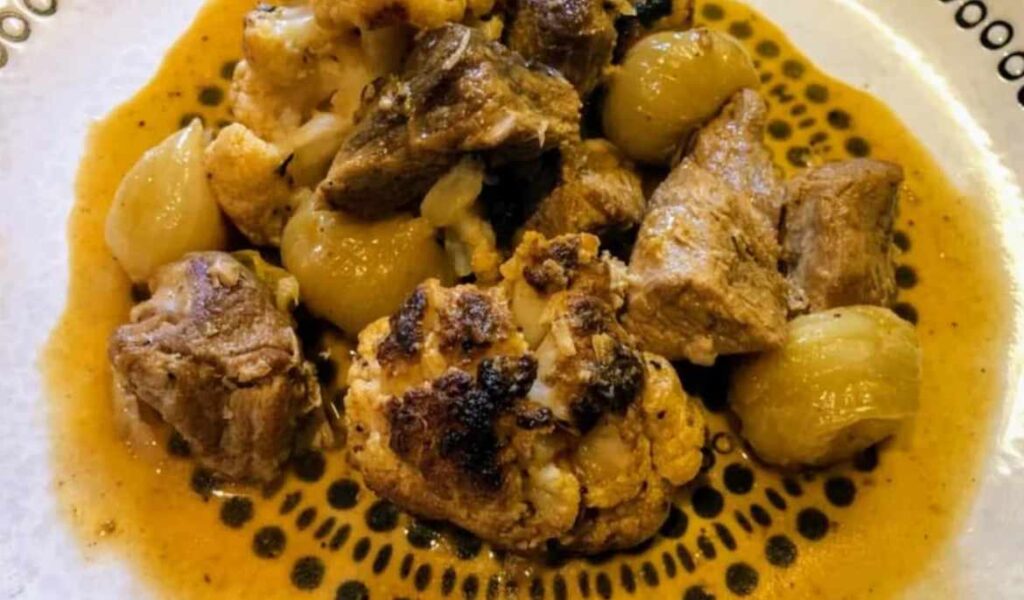Pork with cauliflower, baby onions and potatoes
Not to be confused with Kapamas Kokkinistos (in red wine) Kapama is with red wine and coriander seeds no onion, kaourmas is with little onions, celery and lemon.
I been looking for this recipe for few years now. I telephoned my aunties in Cyprus in Avgorou asking for the recipe but they never heard of it. Then I contacted my friend Soteroulla Haralambous in Xylophagou, to ask her mum, she never heard of this either, so I took a look at the Cyprus food virtual museum and I found it. Apparently, it’s a speciality from Marathasa valley region, a beautiful valley in the Troodos mountain range.
It is the highest inhabited valley on the island home to a total of 12 beautiful picture-postcard villages, including Prodromos, Lemythou, Tris Elies, Kalopanayiotis and Moutoullas.
Kaourmas is traditionally made with pork or goat and Cyprus potatoes, but of course I have changed it a little. I added cauliflower and few other ingredients to make it a little different. It was absolutely delicious, and I will be definitely making again.
Ingredients
½ cup vegetable oil
1 kilo pork shoulder, or goat, cut into large pieces
700g (1lb 8oz) little onions, peeled
½ kilo Cyprus or other waxy potatoes, peeled and cut into large pieces
1 medium to large cauliflower, cut into florets
Salt and freshly ground black pepper
2 celery sticks, chopped
Juice 2 lemons
1 chicken stock cupid, diluted with 500mls of hot water
Method
Heat the oil and fry the onions until golden, remove and keep for later. Fry the potatoes the same then the cauliflower, until golden, save them for later.
In the same oil, fry the pork in two stages to brown and to seal, season with salt and pepper, save for later.
Fry the celery and cook for a minute or two, then return meat to the pan, add the lemon juice of 1 ½ of the lemons, (save the other half for later). Add the warm water with the diluted stock and pour over the meat. When it boils cover with a lid, reduce the heat and simmer for 35 minutes, until the meat
has softened.
After 35 minutes add the onions, mix well then put the potatoes on top of the meat, followed by the cauliflower season with salt and pepper add the remaining of the lemon juice and let it simmer for another 30 minutes or until pork and potatoes have cooked. Do not stir the pan just shake it a couple of times.
Enjoy with lots of bread to soak up the delicious juices!

Rose petal jam
Are your roses blooming? Well, if they are, it’s the best time to make this fragrant rose jam. Harvest your petals in the late morning, after the dew has dried, but preferably not in the heat of the day.
There are several types of edible and wild roses that you can use but it’s best to use fragrant pink roses that have thin and delicate petals so they become soft, and not chewy. Here are some species of roses often used in Rose Petal jam.
Rosa Damascene/ Damask rose
Rosa Centifolia/ Centipede Roses
Rosa Rugosa/Japanese Roses
Rosa Gallica/ French Rose or Galitsa
Take care to only pick roses that are almost in full bloom, these are the most fragrant. The colour of the petals will determine the colour of the jam, make sure your roses are free from pesticides and chemicals, and wash petals thoroughly to remove any dirt and tiny insects.
Lemon juice will help the jam to set, it helps to keep its colour, it stops it crystallising and also prevents bacteria forming.
Ingredients
200g edible organic rose petals, pink or red
600g jam sugar with pectin
Juice 1 lemon
400 mls water
Few drops red food colouring (optional)
2 tbsp rosewater
Method
Prepare the roses, holding the rose in your hand pull it out from the stem and with scissors snap off the white part from the top of the rose petals. Then separate the petals and wash them thoroughly in cold water to remove dirt and insects. Place in a colander and let them drain, then place them on kitchen paper to dry for 30 minutes.
Place half the petals in a large bowl and sprinkle half of the sugar. With your hands scrunch to bruise them, then add the remaining rose petals and sugar and scrunch again to bruise the petals once more.
Cover the bowl and leave it for six hours or overnight, to allow the scent of the rose petals to infuse and for the petals to soften.
Put the petals in a medium deep heavy-based pan over a low heat, add the water, and heat gently stirring all the time until sugar dissolves. Simmer for about 25 minutes, stirring often.
Check to see if the petals have softened, add the lemon juice and increase the heat and bring to the boil for about five minutes or until thickened. Add few drops of red food colouring and the rosewater, test the syrup
To test if the jam is ready, drop a spoonful of the mixture onto a chilled small plate, and if it keeps it shape it’s ready.
Remove the pan from heat, allow the jam to cool a little and spoon into sterilised jars, seal the jars with the lids.
Once open, keep in the fridge.
Rose jam tends to crystallise. If that happens put the jam into a saucepan with a little warm water and a little lemon juice, bring to the boil over low heat until sugar crystals dissolve and repot.



